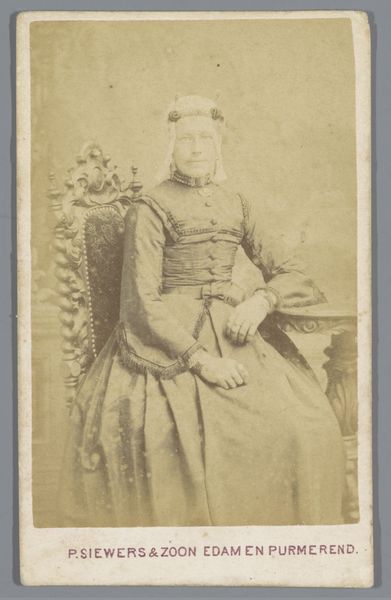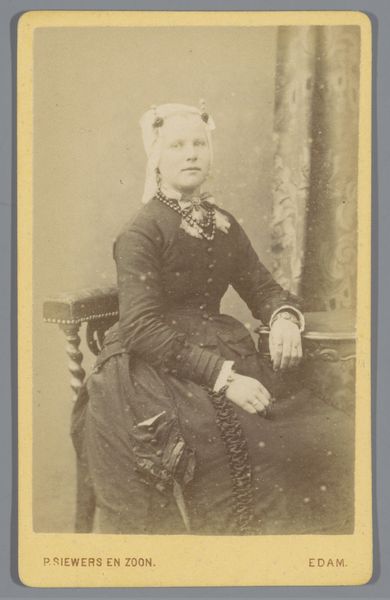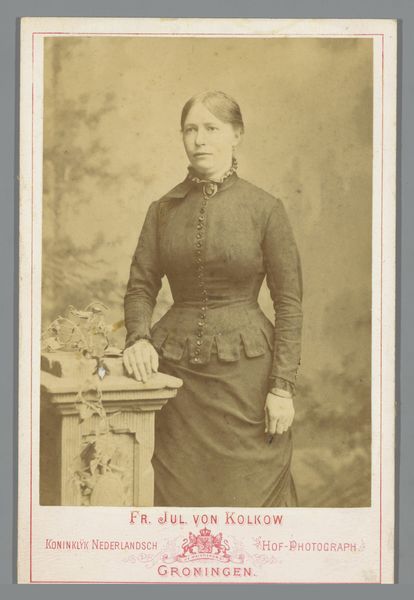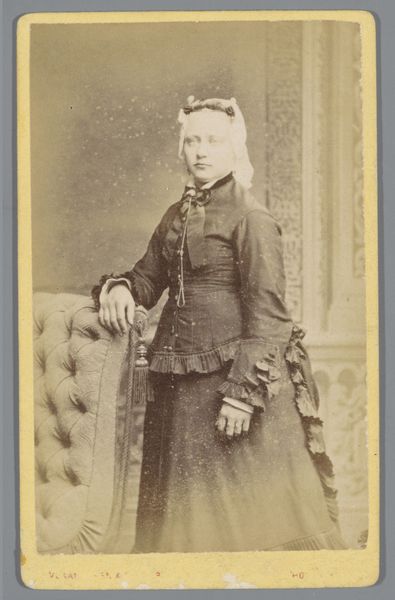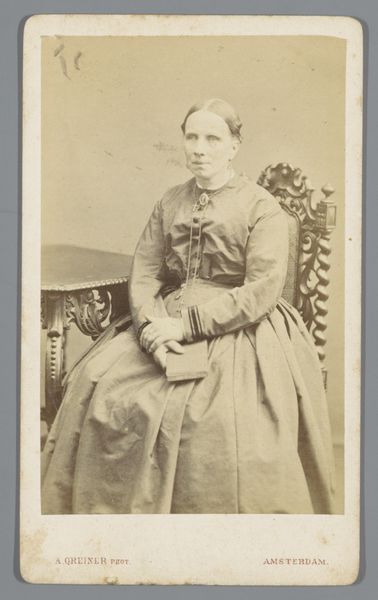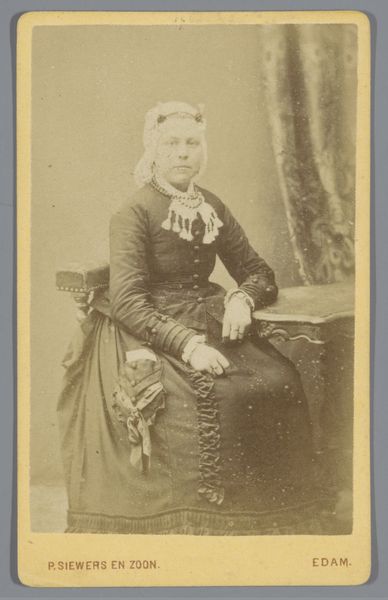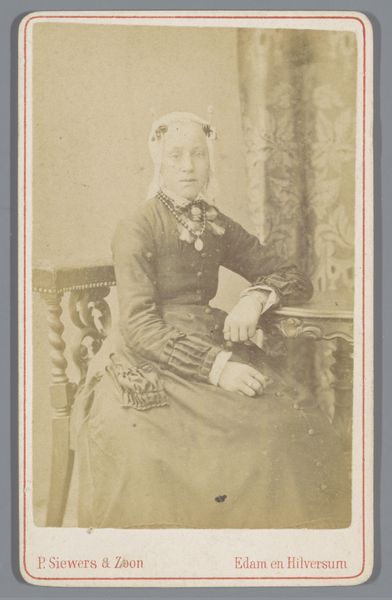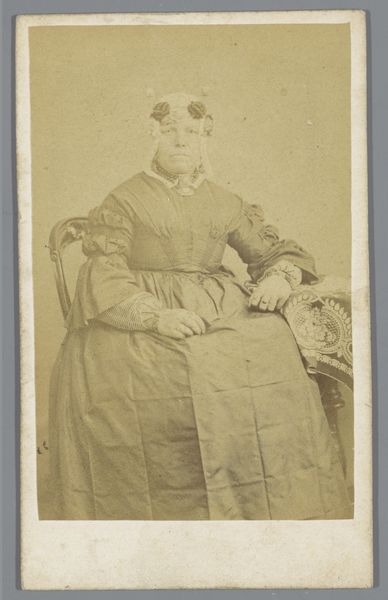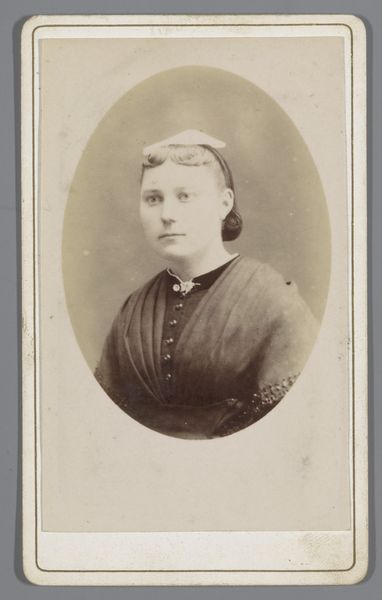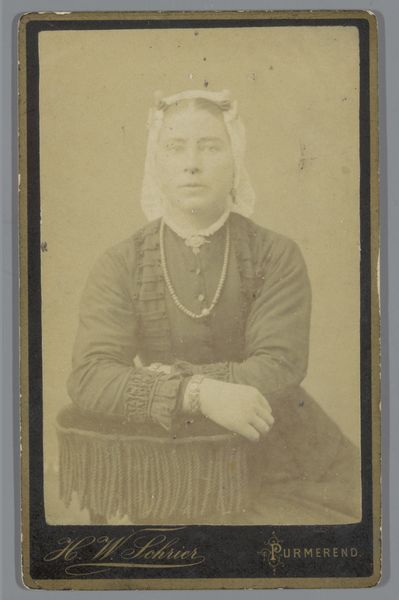
photography, gelatin-silver-print
#
portrait
#
photography
#
coloured pencil
#
gelatin-silver-print
Dimensions: length 100 mm, width 62 mm
Copyright: Rijks Museum: Open Domain
Curator: This is a gelatin-silver print by P. Siewers & Zoon, a photographic studio active in Edam and Purmerend in the Netherlands. The work, titled "Portret van Dieuwertje Buurs," dates from between 1857 and 1898. Editor: My immediate reaction is to the muted tonality and how it creates a sense of stillness. It’s predominantly about texture, from the sheen of the dress to the almost sculptural quality of the chair’s ornate back. The play of light seems crucial to how we perceive depth. Curator: Indeed. Let's consider this stillness further through a socio-historical lens. Photographic portraits in the late 19th century were often significant markers of social status and were especially prominent amongst the burgeoning middle class. The subject's carefully posed demeanor, attire, and even the studio props such as the table, would project particular messages. Editor: Agreed. Semiotically speaking, the dress—while relatively simple—conveys a sense of respectability and perhaps quiet prosperity. Note the slight variations of light on the material; they almost resemble brushstrokes in painting. Curator: Precisely. Studios like Siewers and Zoon were key players in the visual economy of the time, creating and reinforcing social norms and hierarchies. Consider that the widespread availability of photographs gradually democratized portraiture, even though initially, it remained costly. Editor: From a formalist angle, the composition uses a deliberate balance. Dieuwertje is positioned slightly off-center, yet the framing feels complete because her form fills almost the entire image space. I’m drawn to the visual rhythm created by the buttons on her bodice leading upward to the subtle details in her headdress. Curator: That close observation is useful. Viewing the photograph today offers glimpses into the personal identities of individuals and into the societal values placed on public image. Also, let's consider that most people may only have had a photograph taken once or twice during their entire lifetimes, elevating each portrait to a landmark of identity. Editor: Considering all of these features—the formal arrangement, the careful detail in the dress and even the subtle expression of the subject—it becomes evident that there is much to see beyond mere surface appearances. Curator: Ultimately, reflecting on an artifact like this image reveals insights into the complexities of 19th-century society while also challenging our understanding of the evolving dynamics between art and its cultural context.
Comments
No comments
Be the first to comment and join the conversation on the ultimate creative platform.
